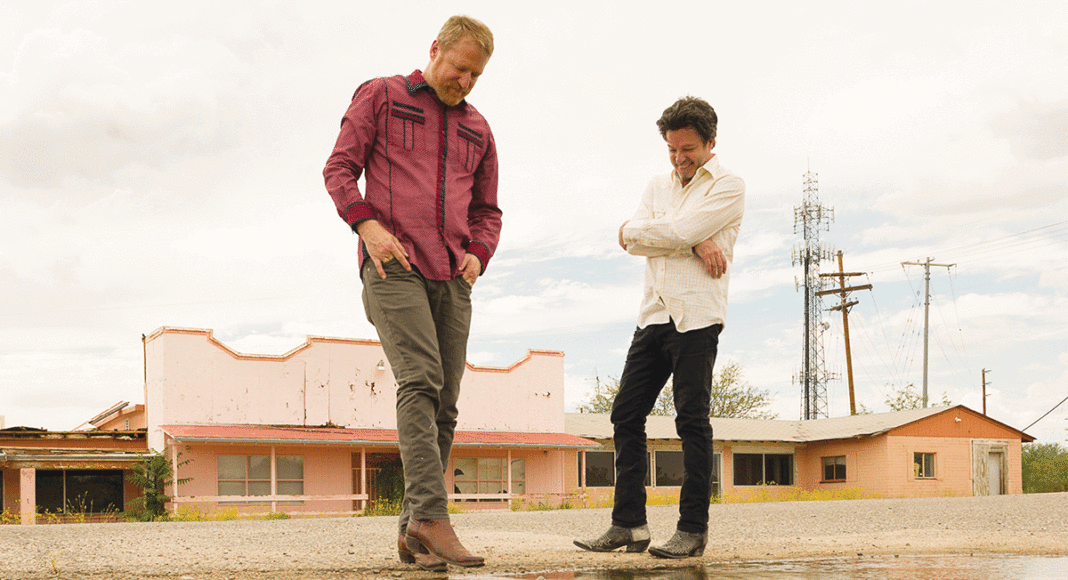EDITOR’S NOTE

Legendary Santa Cruz band Camper Van Beethoven rarely plays here anymore—they rarely play anywhere anymore, since the members are scattered across three different continents. That’s a big part of why their Catalyst gig with Cracker this week is our favorite New Year’s show this year (even though it’s technically on Friday, not the 31st). For me personally, it was a chance to talk once again to David Lowery, who is the frontman of both bands and one of my all-time favorite Santa-Cruz-related people to interview. Since I knew Jacob Pierce and I were going to be doing another batch of Santa Cruz songs (we had to, when you all sent us so many after our last article), I used it as an opportunity to get into the art of writing a Santa Cruz song with someone who has a lot of experience with that. So check out the interview, and our latest list—if the one you suggested isn’t on this list, well, I’m pretty sure there will be a part three.
Before I sign off for this year, I’d like to urge you one last time to go to santacruzgives.org and donate to one of the local nonprofits that we’re asking you to give to this year. I think if you check out Michael Mott’s story in the news section about the nonprofit Live Like Coco and other Santa Cruz Gives participants helping kids in our community, you’ll have an even better understanding of why it’s so important. We have less than a week left to make our goal; we’re counting on you, and so are they. Help make it happen! And see you in 2018!
STEVE PALOPOLI | EDITOR IN CHIEF
LETTERS TO THE EDITOR
Read the latest letters to the editor here.
Inspired by Park Camp
Re: “Tents Situation” (GT, 11/8): Poverty is a condition where people’s basic needs for food, clothing and shelter are not met. While poverty does not automatically coincide with drug addiction, mental illness or criminal behavior, it is, at times, an assumption readily made, and then used to criminalize an entire population.
Having lived in Santa Cruz in the 1990s-2000s, I witnessed the survival behaviors associated with the criminalization of the homeless population. Public policy at the time created laws that penalized and criminalized survival behavior. This approach has been replicated in cities throughout the United States, culminating in a population that is growing and becoming more disenfranchised and desperate.
I now live in Oakland, where between 2015 and 2017, the homeless population jumped 25 percent. More than 60 percent of those living on the streets in Alameda County resided in homes for more than 10 years before becoming homeless. The number one reason given for becoming homeless was not drugs or mental health issues, but poverty. Income inequality, unemployment and lack of affordable housing are the chief reasons for the homeless crisis that permeates cities like Oakland and Santa Cruz.
Today, while visiting Santa Cruz, I was taken to a new Homeless Camp located in San Lorenzo Park. Living in Oakland, I was anticipating something similar to the over 100 “tent cities” that occupy the streets of Oakland. What I found was something unprecedented.
I learned that the new Chief of Police, Andrew Mills, has very recently come into the city with a new set of eyes on how to work and come to solutions with the community of both homeless and housed populations who share the community. While long-term relief for the homeless population in Santa Cruz is a long way in the making, what Mr. Mills has begun could be a roadway into humanizing and offering hope to those who are the most vulnerable in any city, large or small. This act further offers a sense of dignity and respect; it will only be from that place where opposing viewpoints can come together to form viable solutions to the problems that impact a population. According to the two-year census report posted in 2017, the homeless population is on the rise in Santa Cruz, especially among the youth.
Together with the Parks and Recreation Department, Mr. Mills has devised a camp where homeless people are given designated outdoor sleeping “real estate” demarcated by white chalk lines and reserved on a first come, first serve basis each day. The camp is patrolled by an employee of Parks and Recreation who I witnessed a few times explaining the rules of the camp to newcomers. Much has already been written about how the camp works, but while I was inspired and heartened by this new approach, I was quickly saddened to hear the level of controversy and backlash this has caused the new police chief. Some have interpreted this approach as enabling or a band-aid fix, while others fear it will be an opening of the “floodgates” into the city by more homeless people.
What appears lost is how this new approach could actually engender an atmosphere of hope and trust between the city officials and the homeless population; it will allow those who live on the streets a sense of belonging and a sense of dignity. It has been said that “character is how you treat those who can do nothing for you.” Mr. Mills showed his character today as I walked through and witnessed his vision of a first step in a long-term process.
I write this to offer support for Chief Mills for recognizing the long-term problem homelessness has been for Santa Cruz, and for his willingness to try an approach that is unpopular and unprecedented. I do not believe he sees this one homeless camp as the answer to an issue that needs to be addressed on multiple levels and that will take years to improve. What I do believe is when we, as a community, begin to see our homeless brothers and sisters as part of our community, this is the best and only first step toward resolution. We need input from those who are living outdoors; we need to hear and understand their stories, we need to ask them what they think the solutions are. And, unless there is trust between the community and those who police it, there is not much of a chance for dialogue that could lead to solutions.
To quote Dorothy Day, “We must talk about poverty because people insulated by their own comfort lose sight of it.” Thank you, Mr. Mills, for thinking and acting outside of your own comfort to bring the issues of our homeless population in Santa Cruz into the light of day.
Tracie De Angelis | Oakland
PHOTO CONTEST WINNER

Submit to ph****@*******es.sc. Include information (location, etc.) and your name. Photos may be cropped. Preferably, photos should be 4 inches by 4 inches and minimum 250dpi.
GOOD IDEA
ART OF THE MATTER
The new year will be a good time to celebrate art and community spaces, as the newly renovated Louden Nelson Community Center is hosting an open house to show off its new grant-funded improvements from 2-4 p.m. on Sunday, Jan. 7. Visitors can also witness the dedication of a new youth mural, see the unveiling of the new Louden Nelson Community Center sign, and enjoy free entertainment and refreshments. For more information, visit cityofsantacruz.com.
GOOD WORK
DANCE TO SHINE
Up-and-coming director Andrew Dillon of Soquel poured his heart and soul into Hope Dances, a film about a young dancer that was shot on location all over Santa Cruz County. He even cast his daughter Avarose as the protagonist, a ballerina who’s hungry to break through to the next stage in her fledgling career. The heartwarming tale is available on Amazon Prime, where it has an average of four stars, and on iTunes, where it has an average of five—as well as on pay-per-view.
QUOTE OF THE WEEK
“New Year’s Resolution: To tolerate fools more gladly, provided this does not encourage them to take up more of my time.”
-James Agate













